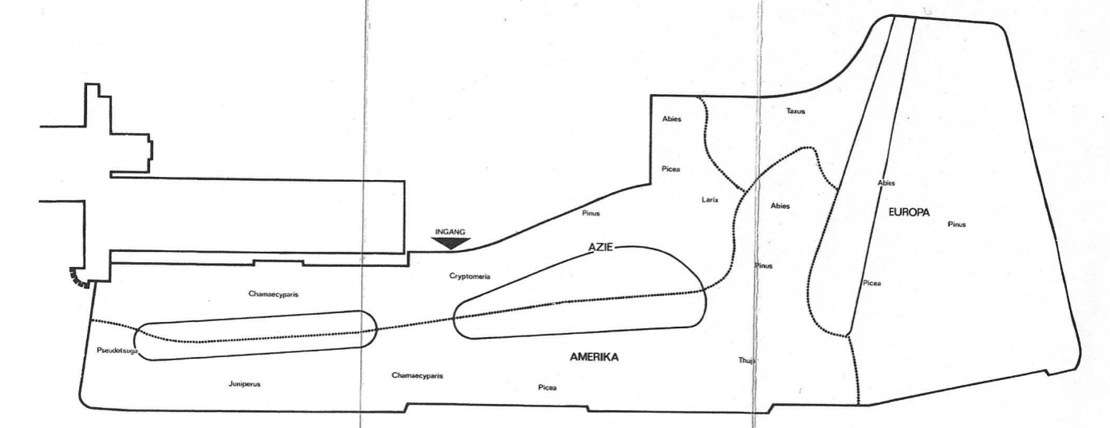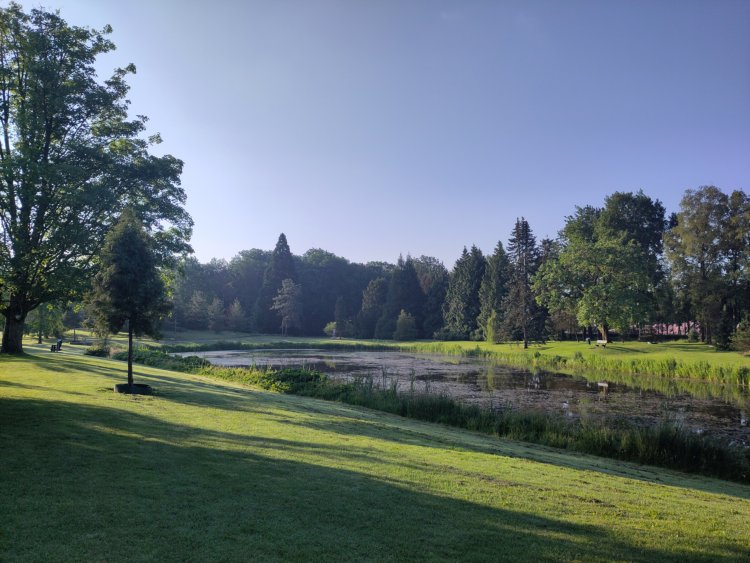On the University of Twente campus lies Pinetum ‘De Horstlanden', a 4.5-hectare garden dedicated to an impressive collection of conifers. Since its establishment in 1969, the Pinetum has served as a serene and uniquely biodiverse spot. But how did this unique slice of nature on campus come about?
A unique collection
The Pinetum is more than a visual delight: it functions as a genetic archive of species and cultivars, including rare, older specimens that are no longer cultivated today. Some trees, like the Juniperus Chinensis Pfitzeriana Glauca near The Gallery, are among the largest of their kind in the Netherlands. Moreover, several trees predate the Pinetum itself. These unique historical elements make the Pinetum a remarkable feature of our campus—a true source of pride.
Origins of the pinetum
The Pinetum was created through a collaboration between the Twentse Boomkwekersstudieclub (Twente Tree Growers Study Club), Grontmij De Bilt, and W.J.M. Janssen, a horticultural expert from Wageningen University & Research (WUR). The University of Twente provided the location, situated between Hengelosestraat and the campus, as a natural buffer zone and green gateway.
The conifers are arranged based on their geographical origin: Asian species are planted to the north of the ponds, American species to the south, and European species to the east. This layout highlights the diversity and provenance of the species, combining aesthetics with ecological awareness. Most conifers retain their lush green color throughout the year.

Map of the Pinetum
Thoughtful landscaping
The Pinetum features a carefully crafted combination of open grass fields, ponds, and long sightlines alternated with strategically placed conifers. Certain tree species were given prominent positions to showcase their unique characteristics, while grouped plantings enhance the natural ambiance. Initially, temporary vegetation was used to quickly create an attractive landscape, which has since been replaced with mature, permanent plantings.

Promoting biodiversity
Conifers play a vital role in the ecosystem: they purify the air, provide shelter for birds such as sparrows and owls, and contribute to the green infrastructure of the campus. Most species are evergreen and grow slowly, ensuring a year-round contribution to the campus’s environment.
A sustainable legacy
Today, the Pinetum stands as a testament to the University of Twente’s commitment to preserving cultural and ecological heritage. It is an integral part of the campus landscape, offering not only a peaceful retreat but also serving as a living example of sustainable land use and the importance of conserving rare plant species.
Whether you’re a casual visitor, a conifer enthusiast, or simply seeking a moment of tranquility in nature, Pinetum De Horstlanden invites you to discover its beauty. We look forward to welcoming you soon!
Learn more?
More information regarding the Pinetum can be found on the webpage. An extensive map featuring the names of all species will be added soon, following a recent comprehensive survey of the trees.
Biodiversity at UT
Strengthening biodiversity on our campus is one of our sustainability goals at the University of Twente. By improving monitoring, we gain knowledge about biodiversity on campus in general, which helps us decide on the best ways to support it. In 2024, we started the yearly Bioblitz, in which anyone can help monitor species via the app ObsIdentify. Several activities were organised to raise awareness of biodiversity (such as bird observation). A biodiversity council was established, where CFM (Campus & Facility Management) consult with biodiversity enthusiasts on how maintenance can contribute to an improved habitat for species. Furthermore, thanks to a Climate Centre grant, we are working on making data on green maintenance and biodiversity accessible for research and education.
Would you like to find out more about sustainability at UT? Please go to utwente.nl/sustainability.





